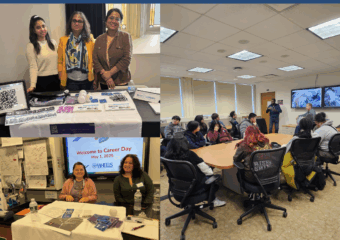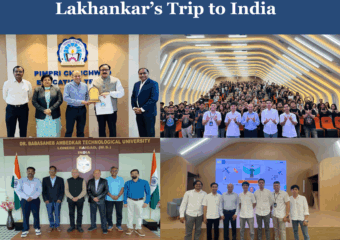Prathap Ramamurthy Interviewed by the German Public Radio
 Prathap Ramamurthy joined City College in the Fall of 2014 as a CREST Faculty Affiliate and Assistant Professor in Mechanical Engineering. He attended the 2014 American Geophysical Union Fall Meeting and gave a talk titled “Impact of Heat Waves on Urban Areas in the North Eastern United States”. He was also interviewed by German Public Radio where he discussed the implications of his research on the development of mitigation strategies for climate change. Professor Ramamurthy investigates how climate change impacts cities and how the increasing number of people in urban areas can contribute to climate change. Urban landscape factors contributing to climate change include the increasing number of high-rise buildings, electronic equipment on roof tops and car congestion. Manhattan is a perfect example.
Prathap Ramamurthy joined City College in the Fall of 2014 as a CREST Faculty Affiliate and Assistant Professor in Mechanical Engineering. He attended the 2014 American Geophysical Union Fall Meeting and gave a talk titled “Impact of Heat Waves on Urban Areas in the North Eastern United States”. He was also interviewed by German Public Radio where he discussed the implications of his research on the development of mitigation strategies for climate change. Professor Ramamurthy investigates how climate change impacts cities and how the increasing number of people in urban areas can contribute to climate change. Urban landscape factors contributing to climate change include the increasing number of high-rise buildings, electronic equipment on roof tops and car congestion. Manhattan is a perfect example.
German Public Radio journalists wanted to find out how science can help to combat these city-related environmental issues. Prathap explained that “all major cities lack the trees and water surfaces that ensure city cooling during the summer. This makes people living in the cities turn on their air conditioners to cool down their homes. Unfortunately, this does not eliminate the heat but moves it outside causing outside temperatures to rise higher and higher. It’s a vicious circle.” Prathap investigates the influence of heat waves on “urban heat islands” like Manhattan which heats up in the summer up to seven degrees Celsius higher than the ambient temperature.
Prathap is interested in understanding how heat is transported in urban areas, how buildings use energy and how urban areas can be represented in climate models. He also collaborated with the NYC Mayor’s Office in the “Cool-Roofs program.” The program was the first large-scale cool-roof program in the country. More than 4,000 volunteers painted 3.6 million square feet of rooftops. The painted rooftops were identified as “hot spots” areas where the urban heat island effect is the worst. The data obtained from the program demonstrates a dramatic decrease in temperature due to rooftops painted white.
Expanding this program can be critical for scientists like Dr. Ramamurthy and will help him to identify efficient strategies to combat climate change in cities.



